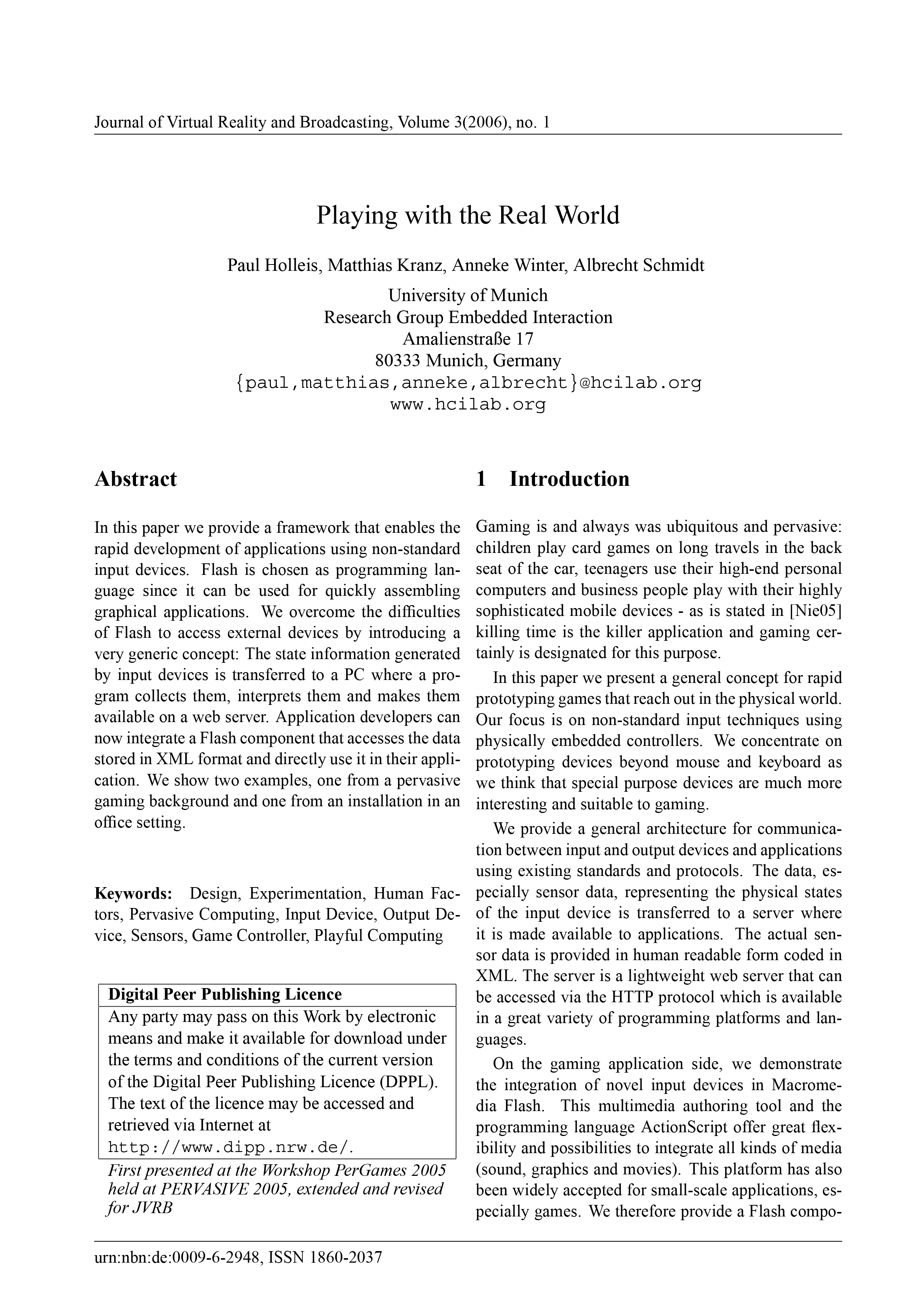Playing with the Real World
DOI:
https://doi.org/10.20385/1860-2037/3.2006.1Keywords:
Design, Experimentation, Game Controller, Human Factors, Input Device, Pervasive Computing, Playful Computing, SensorsAbstract
In this paper we provide a framework that enables the rapid development of applications using non-standard input devices. Flash is chosen as programming language since it can be used for quickly assembling applications. We overcome the difficulties of Flash to access external devices by introducing a very generic concept: The state information generated by input devices is transferred to a PC where a program collects them, interprets them and makes them available on a web server. Application developers can now integrate a Flash component that accesses the data stored in XML format and directly use it in their application.
Published
2006-04-11
Issue
Section
PerGames 2005





